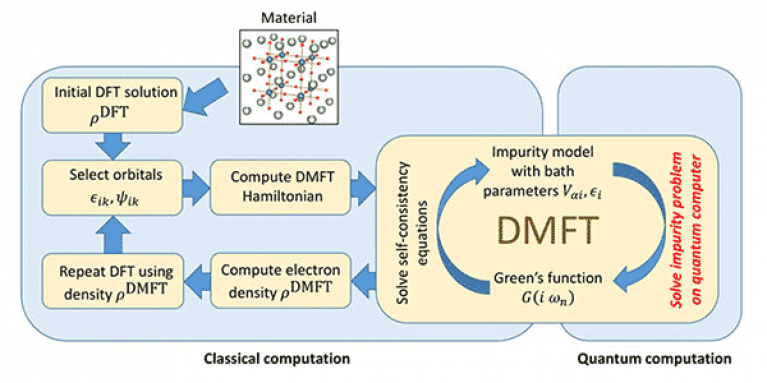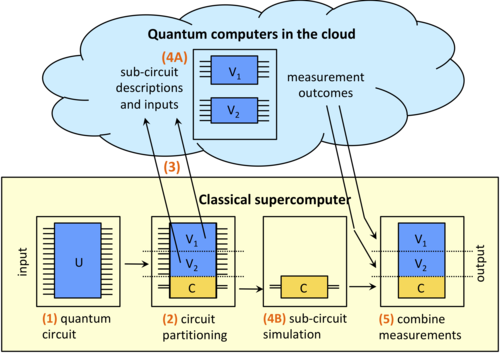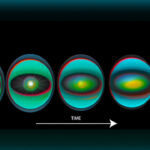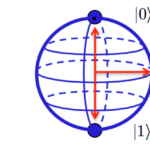Practical quantum computing requires connections to the outside world. Those connections may be for collaboration between a quantum computer and an external computing resource such as a supercomputer. They can simply output the results of the quantum computations in a manner accessible and usable by human operators. In either case, there’s a paradox between the need to isolate the qubits in quantum computers from disruptions caused by the external environment and access to the computational results in external (typically room temperature) environments.
The previous FAQ on “Quantum computing system architectures” provided a detailed look at quantum computers’ architectures and operational needs. This FAQ will dive into the junction between quantum computing and classical computing.
A practical quantum computer will be expected to have at least some interface with users and classical computing networks. The first step is the ability to read quantum states in real-time. As discussed in the previous FAQ, IBM has turned to a special class of low-noise microwave amplifiers, known as quantum-limited amplifiers (QLAs), to address this challenge. The performance of QLAs needs improvement before they can support future generations of “large” quantum computers deployed in the cloud.
It can also be important to have links from the outside world to a quantum computer. Qubit systems demand careful control if they are to function in a useful manner. That control can be managed using classic computing resources linked to the quantum computer. The structure of a functioning quantum/classic hybrid computing architecture can be viewed as four “layers”:
Quantum layer where the qubits exist and where the quantum computing takes place.
Control and measurement layer that operates at or near cryogenic temperatures and controls the operation and measurement of the qubits
Control processor layer operates at or near room temperature. It controls the sequence of operations and measurements needed by the quantum algorithm, including determining the need for and control of iterative operations.
The host processor layer is a classical computer providing access to large storage arrays and networks and supporting user interfaces, enabling user instructions in addition to reading out the results of the quantum computer.

Numerous organizations are working on various aspects of the need to connect quantum computers with the outside world. The following are several examples of those efforts.
The Microsoft Quantum lab at the University of Sydney has developed hardware enabling quantum computers to connect with the outside world while maintaining the stability of the qubits. Called “Gooseberry” this specialized CMOS circuit includes the digital and analog functions needed to use digital inputs and generate many parallel qubit control signals. Gooseberry can scale to support thousands of qubits in future quantum computers. It operates at 100 milliKelvin (mK) while dissipating sufficiently low power to not exceed the cooling power of a standard commercially available research refrigerator at these temperatures.
The Microsoft Quantum lab has also developed a general-purpose cryo-to-compute core operating at slightly higher temperatures achievable in liquid Helium. The cryo-to-compute core performs the classical computations needed to create the instructions sent to Gooseberry. Gooseberry translates those instructions into voltage pulses to control the qubits. The combination of the cryo-to-compute core plus Gooseberry is one solution to the problem of creating the thousands of I/Os needed to control thousands of qubits.
The so-called “interconnect wiring bottleneck” of quantum computing addressed by the Gooseberry chip is also the focus of an effort by Intel. The Horse Ridge chip from Intel addresses the development of control electronics that can operate at high fidelity. Horse Ridge is a cryogenic control chip for qubits built using Intel’s 22nm FinFET Low Power technology. A second generation of the chip was introduced recently. Horse Ridge brings key control functions for quantum computer operation into the cryogenic refrigerator – as close as possible to the qubits themselves – to streamline the complexity of control wiring for quantum systems.
Recent research has demonstrated that a CMOS-based cryo-controller like Horse Ridge can achieve coherent control of a two-qubit processor at the same levels of fidelity (99.7%) as room-temperature electronics. That is considered to be a significant milestone in terms of cryo-control electronics for quantum computing. A future goal of this development effort is to integrate the controller chip and the qubits on the same die or package; they are all fabricated in silicon. That would provide a commercial path to quantum scalability.

Hybrid algorithms merge CPUs with QPUs
Developing hybrid quantum and classical algorithms is another aspect of creating useful quantum computing platforms. That is one of the team’s goals from the U.S. Department of Energy’s Argonne National Laboratory and Los Alamos National Laboratory, along with researchers at Clemson University and Fujitsu Laboratories of America. The team has developed hybrid algorithms to run on quantum machines and has demonstrated them for practical applications using IBM quantum computers. To distinguish between the two platforms, the team refers to the classical and quantum stages of hybrid algorithms as central processing units (CPUs) for classical computers and quantum processing units (QPUs) for quantum computers.
The new hybrid algorithms are designed to blend classical and quantum computers’ best features and capabilities to address the limitations of both systems. For example, quantum computers have only a small number of qubits and, therefore, limited memory capacity, while classical computers have large memories capable of storing huge datasets. Conversely, algorithms on quantum computers excel at solving certain classes of problems compared with classical algorithms.
Graph partitioning and clustering were examples of practical optimization problems that can be solved with today’s quantum computers. A small partitioning problem can be handled directly by current QPUs, while a larger problem requires a hybrid quantum-classical approach. As the problem grows in size, the researchers used decomposition methods borrowed from high-performance computing and numerical analysis to split the problem into smaller chunks that the QPU can handle with help from the CPU.
Hybrid algorithms for materials simulations
Materials simulations are important for various industries, from battery development for next-generation electric vehicles to and development of pharmaceutics and drugs for improved medical therapies. Researchers in these areas often turn to supercomputers for the needed computing power. In the future, the use of quantum computers as special-purpose accelerators is expected to be a disruptive factor, dramatically improving the ability to perform detailed materials simulations.
A team of researchers from Microsoft Research, Columbia University, and ETH Zurich expects large-scale quantum computing to be realized within the next ten years. Preparing for that development, the team is developing hybrid quantum-classical algorithms on small quantum computers that will provide a roadmap to similar algorithms on larger quantum platforms for the analysis of strongly correlated crystalline materials or complex molecules and even quantum materials, which exhibit a wide variety of interesting physical phenomena and have a broad range of applications.
The envisioned algorithm solves a self-consistently determined problem via a feedback loop between quantum and classical computation. A quantum computer enables much larger and more accurate simulations than with any known classical algorithm and will allow many open questions in quantum materials to be resolved once a small quantum computer with around one hundred logical qubits becomes available.

Quantum computer plus a classical supercomputer
In a hybrid quantum computer, the quantum device will act as a quantum co-processor, or accelerator, that works with a classical supercomputer. The algorithms that run on a hybrid quantum computer will need to be more robust relative to the decoherence of the qubits, reducing the need for quantum error correction. The figure below illustrates a possible hybrid architecture that includes a classical supercomputer and quantum processors in the cloud.

The computation in the figure above consists of the following steps:
(1) The quantum algorithm is programmed in a quantum programming language (such as Qiskit, an open-source SDK for working with quantum computers at the level of pulses, circuits, and algorithms that uses Python) and compiled into a quantum circuit.
(2) The resulting quantum circuit is partitioned into sub-circuits that are small enough to fit on existing quantum hardware (today’s quantum computers are limited in scale), and sensitivity to noise must be minimized to ensure reliable operation.
(3) The quantum sub-circuits need to be distributed and installed in the quantum processors (which may be at another location) and on the classical supercomputer. The circuits need to be both fault-tolerant and simple enough (shallow enough) to run on the available quantum hardware.
(4A) Performing quantum computations, probably on a remote superconducting quantum computer. Initially, at least, quantum computing resources will be limited and will require substantial support infrastructure (e.g., for the superconducting environment). The output of the quantum computer will be converted into classical bits for transmission back to the supercomputer (with minimal latency) for subsequent processing.
(4B) Classical computing, as needed, using a supercomputer. For example, the Intel Quantum Simulator (Intel-QS), also known as qHiPSTER (The Quantum High-Performance Software Testing Environment), has been used as a software interface. It’s a simulator of quantum circuits optimized to take maximum advantage of multi-core and multi-node architectures. Intel-QS has been ported to the Cray/Intel supercomputer, Theta.
(5) Combine and analyze the results from both the quantum and classical computers, possibly performing one or more iterations of the overall process with the same or different quantum circuit inputs until a satisfactory result is achieved.
Summary
Hybrid systems merging quantum computing with classical computers are expected to be necessary to realize the full potential of quantum methods. That will involve developing hybrid hardware environments connecting the quantum and classical computing worlds and developing hybrid quantum-classical computing algorithms to use those complex hybrid computing environments effectively. As shown, numerous research and development teams are working on various aspects of creating these hybrid quantum/classical computing systems.
References
Hybrid quantum-classical approach to correlated materials, Microsoft Research/Arvix
Hybrid Quantum-Classical Computing Architectures, Third International Workshop on Post-Moore’s Era Supercomputing
Intel Quantum Simulator, Github
Pioneering quantum hardware allows for controlling up to thousands of qubits at cryogenic temperatures, Microsoft Research


